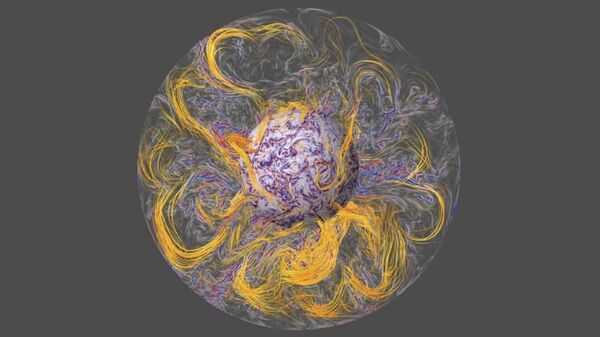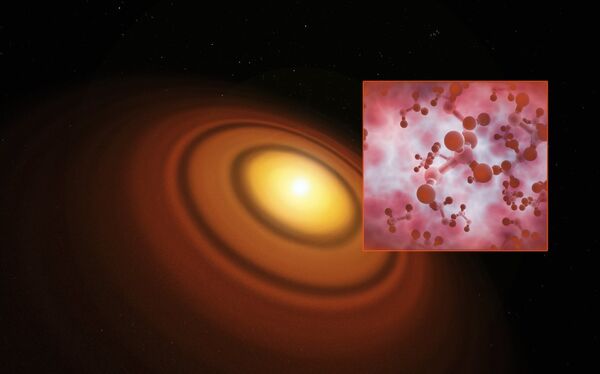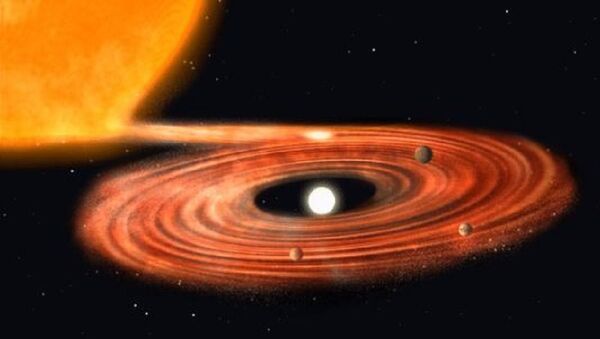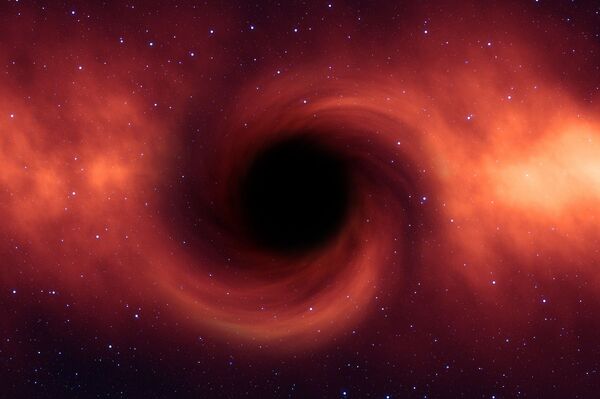A team of astrophysicists has, for the first time, united the observation of planet development and magnetic field formation in one study.
Published in the Astrophysical Journal, the research, entitled “Global Simulations of Self-gravitating Magnetized Protoplanetary Disks”, brought together what was previously two separate fields of research, and, accordingly, was simulated in separate models.
Lucio Mayer, Professor of Computational Astrophysics at the University of Zurich and Project Manager at the National Centre of Competence in Research Planets, along with his colleagues Hongping Deng, former Ph.D. student of Mayer, and Henrik Latter, University Lecturer at the University of Cambridge, carried out computer simulations to investigate the processes at work when planets form from protoplanetary discs of gas and dust, such as the growth of a planet's mass as well as the formation of its magnetic field.

Astrophysicists have long determined that so-called gravitational instability (GI) in a rotating disk of matter causes particles to "clump together" forming high-density structures out of which planets could have built up in the course of some hundreds of thousands of years.
However, not enough has been known about the effects of the magnetic field during gravitational instability.
The current study sought to remedy this, by using the "Piz Daint" supercomputer at the Swiss National Supercomputing Centre (CSCS) in Lugano. The team simulated the development of the protoplanetary disk both under the influence of gravity and in the presence of a magnetic field. As a result, they discovered a completely new mechanism, possibly able to shed light on previously unexplained observations.
Angular Momentum Conundrum
One intriguing problem that the current research hopes to solve is that planets in our solar system currently rotate a great deal more slowly than the protoplanetary disk they must have formed from.
During the formation of planets, stars and black holes, vast angular momentum ought to be lost, show studies, while exactly how this occurs still unclear.
"Our new mechanism seems to be able to solve and explain this very general problem," says Lucio Mayer.
The researchers believe that, through their work, they have discovered a completely new friction mechanism which significantly erodes the angular momentum of the disk.
"Thanks to the powerful engine of spiral density waves, our new friction mechanism appears even more efficient in dense protoplanetary disk regions in which there are fewer charged particles to sustain the magnetic field," said Deng.
It was thanks to the development of a suitable method by Mayer’s former student Hongping Deng that the Professor’s dream of combining both processes - planet development and magnetic field formation in one simulation could come true.
The new numerical technique was further developed and optimized to best utilize the advantages of "Piz Daint" supercomputer.
Thus, the team made ample use of an enhanced hybrid mesh-particle method to calculate the magnetic field, fluid dynamics and gravity.
The method brought about amazing results, as it became evident that the spiral arms formed by gravity in the protoplanetary disk act like a dynamo, with the magnetic field growing in strength. More heat is generated by this process in the protoplanetary disk than previously believed.

But the fact that the dynamo seems to have a significant influence on the motion of the matter was the greatest surprise.
The dynamo pushes it inward and outward, away from the disk, with the latter evolving faster than suggested by previous theories.
"The simulation shows that the energy generated by the interaction of the forming magnetic field with gravity acts outwards and drives a wind that throws matter out of the disk," said Mayer.
Conceding that this would cause 90 per cent of the mass to be lost in less than a million years, the scientist concluded:
"If this is true, this would be a desirable prediction, because many of the protoplanetary disks studied with telescopes that are a million years old have about 90 percent less mass than predicted by the simulations of disks formation so far."
In subsequent studies the researchers hope to observe the winds and the ejection of matter in early stages of protoplanetary disk life, using powerful telescopes such as the ALMA in Chile or the Square Kilometre Array (SKA) - the world's largest radio telescope currently under construction.



